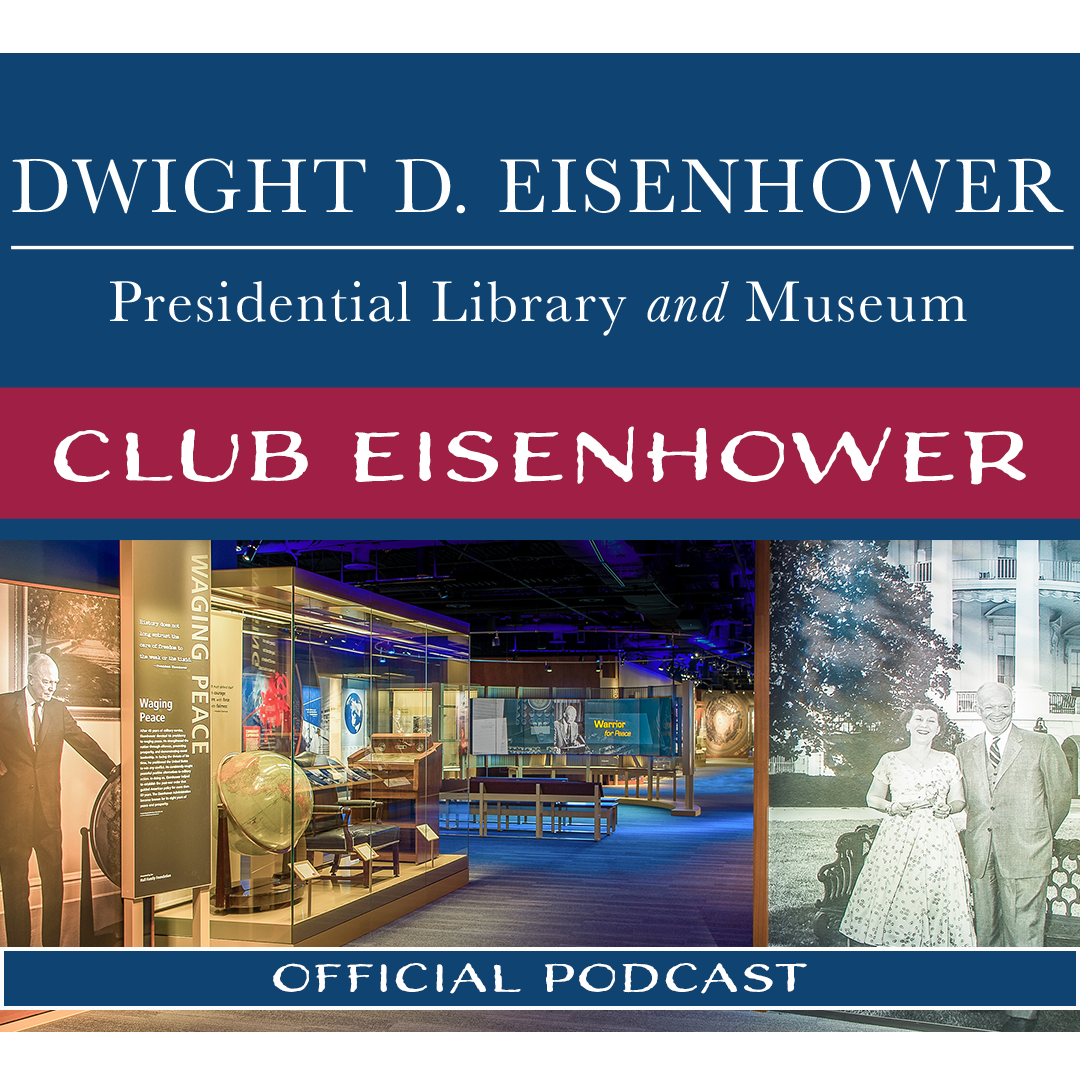Welcome to Club Eisenhower, the official podcast of the Eisenhower Presidential Library and Museum. You may be wondering why we chose Club Eisenhower as the name of our podcast. Here’s why…
During Ike’s early military career, officers were expected to host social events for others, including their superior officers. With Mamie’s finishing school background and vivacious personality, she excelled in this and their quarters became known as “Club Eisenhower.” The guest list may vary with every new duty station, but Club Eisenhower remained a constant. And the Eisenhowers entertained frequently, with Mamie graciously welcoming visiting dignitaries and military officials. Like Ike and Mamie, we graciously welcome you to Club Eisenhower. You provide your own refreshments – and we will provide the entertainment.
January 2024
Food for Peace
On July 10, 1954, President Eisenhower signed a bill creating the program known today as Food For Peace. This program, built on the foundations of the Marshall Plan, provided significant aid to rebuilding efforts in Europe after World War II. Eisenhower expanded American food and economic aid beyond Europe. American crop surpluses were made available to countries in need through the Agricultural Trade Development and Assistance Act of 1954. American farmers benefited from the sale of their surplus crops while these countries were able to purchase needed goods established under this act. Through this program, as President Eisenhower explained, America was able “…to sell surplus food to friendly countries for foreign currencies, which we then used for ... defense, economic development, and international educational exchange.”
Join us as we discuss the impact of the Food For Peace program, its evolution, and how food insecurity looks in an increasingly global economy and food system.
Episode participants:
- Joy Murphy, Eisenhower Presidential Library
- Dr. Jim Ginther, Eisenhower Presidential Library
- Sarah Gard, Dole Institute
- Dr. Vincent Amanor-Boadu, Kansas State University
Related content
Lunch & Learn program:
Global Food Security and U.S. National Security
February 2024
Refugee Relief
At the end of World War II, there were 6.2 million displaced persons in Europe. In 1948, President Truman signed the Displaced Persons Act to assist Europeans who were unsettled after WWII. This act helped over 350,000 displaced persons relocate to the United States and helped pave the way for the Refugee Relief Act of 1953 signed by President Eisenhower. This new act primarily helped refugees and escapees from communist countries immigrate to the U.S. by using non-quota visas. The Refugee Relief Act issued over 200,000 visas and was one of the many ways Eisenhower sought global peace. Join us as we discuss both the past and present impact of refugee relief.
Episode participants:
- Joy Murphy, Eisenhower Presidential Library
- Dr. Jim Ginther, Eisenhower Presidential Library
- Dr. Benjamin Greene, U.S. Department of State
- Aaron Estabrook, Manhattan Area Resettlement Team
- Susan Adamchak, Manhattan Area Resettlement Team
Related content:
Lunch & Learn program:
Operation Safe Haven: The Hungarian Refugee Crisis of 1956-1958
Research Subject Guide:
UPRISINGS IN HUNGARY AND POLAND
Finding Aid:
U.S. PRESIDENT'S COMMITTEE FOR HUNGARIAN REFUGEE RELIEF


